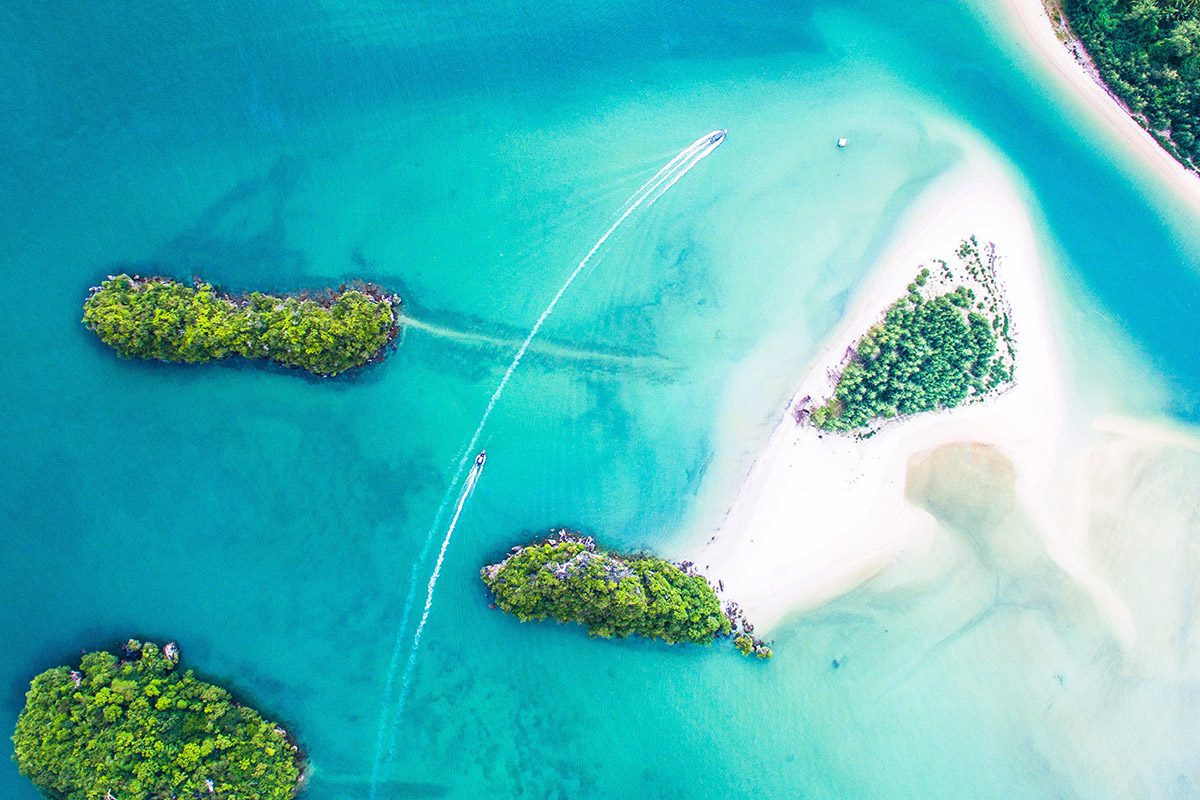Skift Take
As the world begins to recover from the pandemic’s effects and luxury travel evolves, there’s an opportunity to build new destinations from the ground up that implement cutting-edge technologies to usher in smart tourism and create bespoke experiences from day one.
This sponsored content was created in collaboration with a Skift partner.
Luxury travelers increasingly want their trips to positively impact the people and places they visit as the global climate crisis continues to grow. Destinations have worked for years to make themselves more sustainable and encourage tourists to respect the environment while considering things like energy and water usage and food waste when traveling. Many luxury travelers have listened — and this group is key to influencing the growth of sustainable tourism.
Research from Altiant found that 44 percent of affluent consumers in Europe, Asia, and North America are prepared to spend 10 percent more on travel if it helps to protect the environment, and 39 percent would spend more than 10 percent extra. Another affluent traveler survey from Virtuoso found that nearly 70 percent of respondents feel traveling sustainably enhances the vacation experience.
As Varsha Arora, Skift senior research analyst, explained in Skift’s Sustainability in Travel 2021 report, “Destinations have started taking sustainability seriously with growing media pressure and traveler awareness, but have a long way to go to make significant reductions in emissions long-term.” However, new destinations and resorts that are serious about making long-term changes and exceeding luxury travelers’ expectations will have sustainability built into their design from day one. The future of tourism — especially in the luxury segment — is one where travelers don’t have to think about being environmentally friendly, since it’s already ingrained.
Everything from transportation, to hotels, to villas, will be designed to run entirely on renewable energy sources. Natural habitats will be closely monitored to ensure biological diversity and protect against invasive species. Construction will also be sustainable, with most buildings being assembled off-site to minimize the impact to animal habitats and human populations.
A high degree of digital connectivity will discreetly — yet powerfully — enable this sustainability and ensure that the destination can manage visitor flows and create low-impact, truly memorable experiences. It’s this marriage of sustainability and connectivity where “smart tourism” becomes reality.
Sooho Choi, executive vice president of Publicis Sapient, which recently published a content hub centered on smart tourism, explained: “Smart tourism — a concept driven by ‘smart cities,’ or destinations that are enhanced through digital tools — is essentially AI technologies embedded in a destination and its spaces. From airports, to hotels, to public areas, and beyond, a smart destination can better understand a traveler’s wants and needs and optimize the experience accordingly based on their preferences.”
WHAT’S SO SMART ABOUT IT?
Smart tourism is essentially about real-life experiences — the feelings evoked and memories made when one fully immerses themselves in a destination — rather than the technology itself. While technology will play a defining role in smart tourism, it’s only to enhance and elevate the traveler’s experience. Digital technology fuels every step of the journey, but it’s the destination and it’s offerings that are in the foreground. When done right, the technology should be a subtle companion to the traveler.
AUTOMATED BESPOKE
According to Choi, “Smart tourism can completely enhance the typical vacation experience by providing ‘automated bespoke’ offerings.” Smart tourism uses technology to acknowledge and build upon a traveler’s experience to ‘up-level’ the journey as it transpires, all while tending to their unique needs through a highly responsive digital end-to-end framework.
For example, travelers’ luggage could be automatically transported to their hotels without the traveler needing to collect their bags at the airport, which gets them to the destination faster and eliminates a touchpoint that doesn’t add value. Everything about the journey is sorted ahead of time, down to the last preference. From language barriers and dietary needs, to religious-based preferences and any other traveler requirement, the needs and personal preferences of every individual will be tended to, thanks to connected technology.
Saudi Arabia’s Red Sea Project is one example why automated bespoke is the backbone of smart tourism. A game changer for luxury travel, Red Sea will run on 100 percent sustainable solar and wind. The core of Red Sea’s operations is a smart destination management system that supports a variety of personalized digital services to its visitors.
SMART CITIES AND BEYOND
“Using human-centric design every step of the way creates real value for travelers,” said Choi. “Customers can immediately tell when something wasn’t designed with real people in mind or how they will experience something. The destinations that make these considerations will increasingly be rewarded in this new travel era.”
Going forward, luxury travelers will expect that the value they’ll get from their vacation will be higher than any previous trips they’ve taken. Even smart destinations can’t rest on their laurels — each visit must offer something new and build off previous experiences. Using an automated bespoke approach to ensure no two travelers receive the same experience so that they’re enticed to return is the key to making destinations stand apart from the competition.
To learn more about Smart Tourism, visit the Content Hub here
This content was created collaboratively by Publicis Sapient and Skift’s branded content studio, SkiftX.
Have a confidential tip for Skift? Get in touch
Tags: artificial intelligence, luxury, publicis sapient, Red Sea Development Company, saudi arabia, SkiftX Showcase: Consulting, SkiftX Showcase: Destinations

